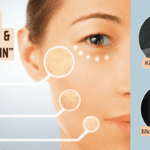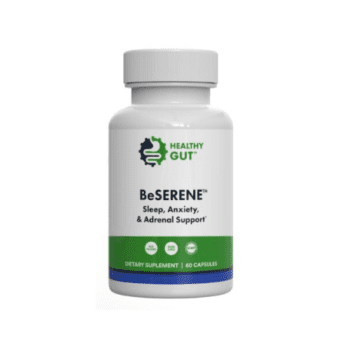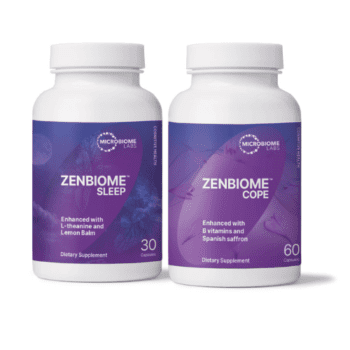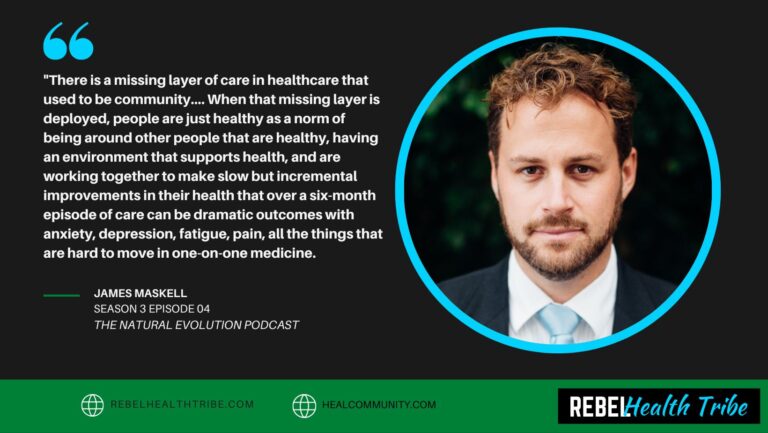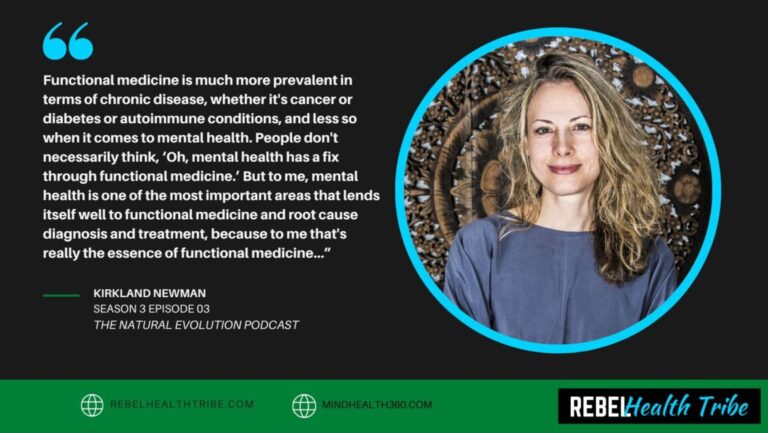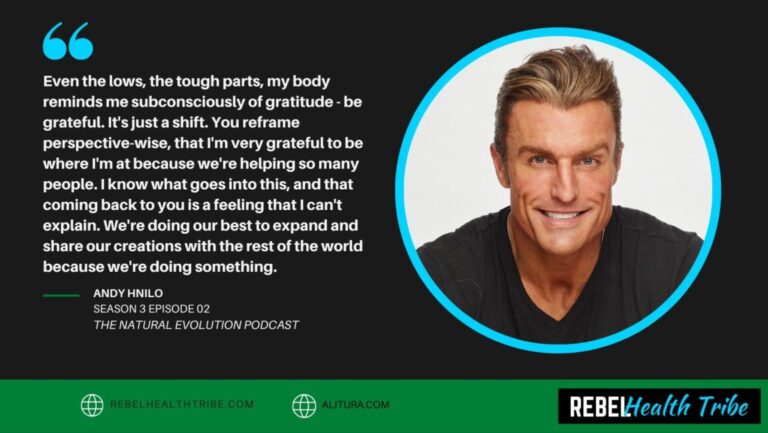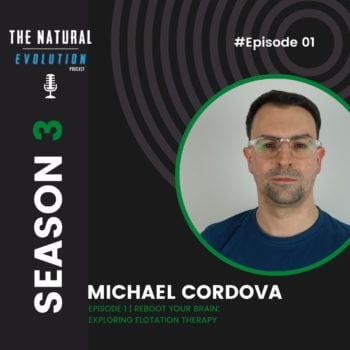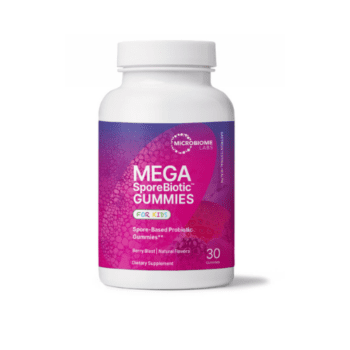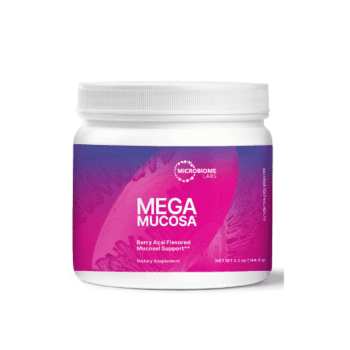

More Posts from
Gut Microbiome & Digestion

Meet Your Microbiome: The Human Microbiome and How to Optimize It
Meet Your Microbiome: The Human Microbiome and How to Optimize
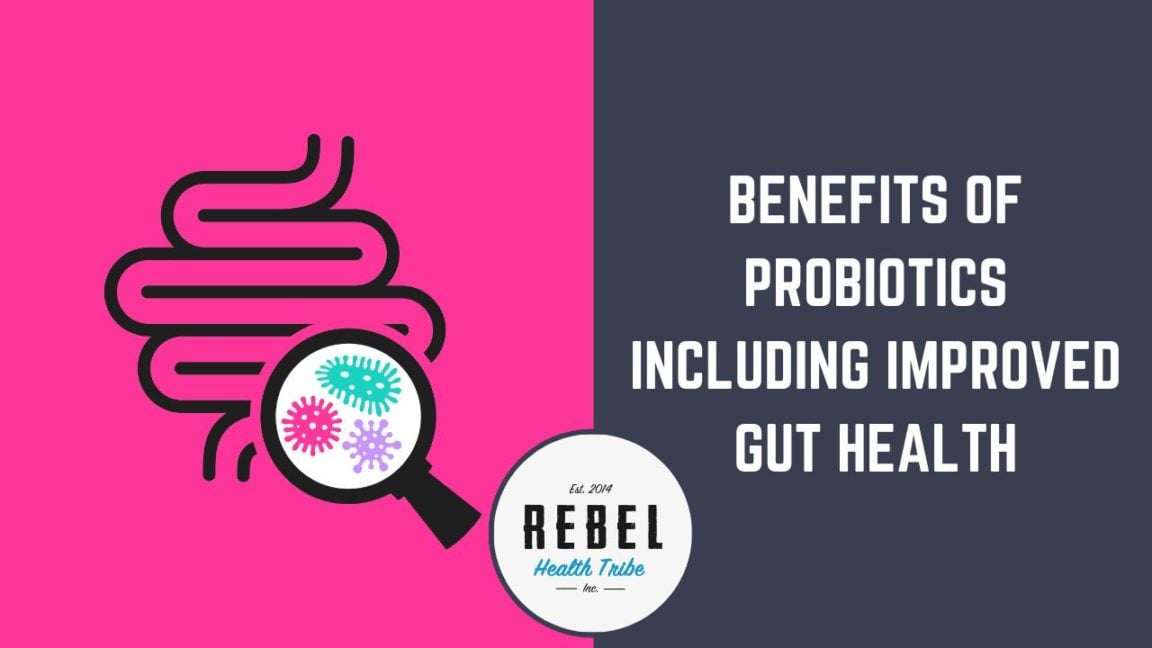
Benefits of Probiotics Including Improved Gut Health
Benefits of Probiotics Including Improved Gut Health “Probiotics” has become

Gut Microbiome Health and the Gut-Immune System Connection: Part 2 Lower GI
Gut Microbiome Health and the Gut-Immune System Connection: Part 2
Meet Your Microbiome: The Human Microbiome and How to Optimize It
On and in the average human, there reside approximately 30 trillion microbial cells — about one for every human cell that composes the body. Put simply, that means that 50% of the cells that comprise your physical being — as a whole — are microorganisms rather than actual human cells. Pretty crazy, right? [1]
These microbes, simply by way of their sheer numbers, can massively affect your health. This synergistic, symbiotic network of bacteria, fungi, protozoa, and viruses is something you’ll never see with your naked eye, but it has a profound impact on your overall wellness.
Altogether, we refer to this invisible living ecosystem as the microbiome.
In this article, we’ll review:
- What the microbiome is, the definition of microbiome, and the specialized roles of the gut, skin, oral, and vaginal microbiome,
- Where the microbiome comes from, and how it is heavily influenced by your mother’s microbiome, your birth, and your early childhood feedings,
- How to improve the microbiome through diet, supplements, and other methods,
- Factors that can harm your microbiota,
- And the connection between SIBO, dysbiosis, and healthy gut bacteria.
The Human Microbiome
There are four main body regions where we’ve discovered (so far) that the human microbiome plays a particularly important role. They are the gut, skin, mouth, and vagina.
Gut Microbiome
The gut microbiome resides primarily in the large intestine. The network of bacteria and yeasts here have the unique role of partially digesting fiber that enters from the small intestine. As a result of this microbial digestion, the bacteria release short-chain fatty acids that influence health in a number of ways.
The gut microbiome plays a key role in brain health and function, metabolism and blood sugar balance, immune health, digestive health, and more. The bacteria in the gut produce some vitamins, neurotransmitters, immune regulating compounds, and more.
There is also growing interest in keystone strains — strains of bacteria that most healthy people appear to have in common in their microbiomes. Keystone strains include Akkermansia muciniphila, Faecalibacterium prausnitzii, and Bifidobacteria longum, to name a few. [2]
When people refer to the human microbiome, they are typically referring to the gut — but it’s not the only important bacterial home on the human body.
50% of the cells that comprise your physical being — as a whole — are microorganisms rather than actual human cells.
Skin Microbiome
The skin microbiome, naturally, refers to the microbes that live on the skin and hair follicles.
A healthy skin microbiome offers major immune benefits. These microbes can help to keep disease-causing pathogens from taking up residence on the skin by crowding them out, releasing peptides that harm the invader cells, or activating the immune system. [3, 4]
Imbalances in the skin microbiome have been linked to skin problems like acne, dermatitis, and rosacea. [4, 5]
Oral Microbiome
The oral microbiome consists of the bacteria that live in your mouth, or oral cavity. These various microorganisms — approximately 700 different types — may offer protection against cavities and oral disease within the mouth, and may even affect immune health, brain health, and metabolism because of their close relationship with the gut microbiome. [6]
Vaginal Microbiome
Finally the vaginal microbiome is another key part of the microbiome to consider. This microbiome consists of the bacteria and microorganisms that reside on and in the vagina.
This microbiome is high in bacteria that produce acidic compounds to maintain a proper pH of the vagina. This helps to prevent potentially-harmful bacteria or viruses from taking up residence, because they are unable to survive the acidic environment. [7]
The vaginal microbiome is a big part of why the vagina is considered a “self-cleaning” organ.
Keep in mind though, that these four aren’t the only microbiome systems the body possesses, and they aren’t individual, separate systems. The entire microbiome in and of itself could be considered a living organ that branches out into nearly every part of the body.

Where Does the Microbiome Come From?
Nearly everything on earth is teeming with microbial activity. There are bacteria and fungi all around us, we just don’t typically think about them because they’re not visible to the naked eye.
So, our microbiome is very much influenced by our environment. The types of microbes and their balance will vary hugely from person-to-person depending on the types of microbes that are on and in our food, drinks, and air. Additionally, there are other factors that can influence our microbiome — like antibacterial soaps, antibiotics, fermented foods, and more.
It all starts, however, in the womb.
The Microbiome and Birth
The microbiome and birth is an interesting subject to dive into. Your baby’s microbiome is profoundly influenced by several factors.
Inside of the womb, babies are exposed to some microbes from the placenta, amniotic fluid, and umbilical cord. The composition of their microbiome at birth, therefore, is heavily influenced by the mother’s microbiome. Additional exposure to bacterial populations that can develop the baby’s microbiome come from the childbirth process and early feedings. [8]
C-Section and Natural Birth
We’ve already discussed the vaginal microbiome and how it helps to regulate the health of the vagina, but it also plays a key role in introducing beneficial bacteria to infants during the birthing process.
As babies pass through the birth canal, they are — for lack of a better term — inoculated with bacteria from the mother’s vaginal canal.
Researchers have even noticed a marked difference between the microbiomes of babies born vaginally vs. C-section babies’ microbiomes. However, interest is growing in ‘vaginal seeding’ of the baby’s microbiome — which involves supplementing babies born via C-section with microbes from the mother’s vagina so that these helpful microbes can go on to colonize in the infant’s microbiome. [9]
Breastmilk and the Microbiome
What about breastmilk and the microbiome? Breastmilk is a source of beneficial microbes — as is the skin-to-skin contact required for breastfeeding.
Researchers have found that the microbes present in breastmilk are also present in infant stool, suggesting a transfer of bacteria from the milk to the infant’s gut. [10]
This is one of the advantages of breastfeeding over formula. However, many formula brands have begun adding probiotic blends to their formulations, with favorable results. [11]
In one study, researchers found that both a C-section birth and formula feeding were associated with a higher risk of infant gastroenteritis hospitalization, which illustrates that there does indeed appear to be a relationship between how a child is born, how they are fed, and their gut health. [12]
How to Improve It
One great thing about the microbiome is that it is something that we can influence heavily with our diet and lifestyle choices, often with fairly rapid and/or dramatic results.
Some interesting clinical solutions exist, like fecal transplant — where fecal matter with a good balance of beneficial microbes is transplanted directly into the colon of someone with an unbalanced gut microbiome, so that the “good” bacteria can colonize there. However, there are also lots of small and large changes you can make to your dietary habits, supplement routine, and other daily lifestyle choices to improve your microbiome diversity.
There are lots of small and large changes you can make to your dietary habits, supplement routine, and other daily lifestyle choices to improve your microbial health.
What to Eat for a Healthy Microbiome
Diet can make or break your gut microbiome, quite literally. Here’s what to eat for a healthy microbiome.
Eating a wide variety of minimally processed foods, along with fermented foods, is an excellent way to help the beneficial bacteria in your gut to flourish. The best foods for the microbiome are as minimally processed and high quality as possible. A variety of root vegetables, in particular, are some of the best foods for the gut microbiome. They provide lots of food for your healthy bacteria. And it may also be a good idea to include fermented foods and drinks like kombucha, kefir, sauerkraut, kimchi, and whole milk, no-sugar-added yogurt — if you aren’t dealing with dysbiosis or SIBO (which we’ll discuss below).
However, nutrient-poor, highly-processed food can damage your gut bacteria because it doesn’t provide what they need to thrive.
Microbiome Health Supplements
There are also many different supplements you can take to help restore balance to your microbiome. Here’s a quick rundown, along with our specific product recommendations.
Probiotics
Probiotic supplements contain live, active bacteria that are beneficial for gut health. It’s a good idea to take one to help restore or maintain healthy bacteria populations in your gut, but it’s important to pick a quality probiotic that contains truly useful, living strains.
We highly recommend Megasporebiotic, a spore-based probiotic supplement that provides beneficial Bacillus strains that can help promote microbial diversity, produce natural antimicrobials to assist with unwanted overgrowths, reduce leaky gut, and much more.
You may want to check out this webinar, which features microbiologist Kiran Krishnan (formulator of Megaspore), reviewing 13 published and soon-to-be published studies demonstrating the far-reaching benefits of these spore-based probiotics.
Prebiotics, Postbiotics, and Synbiotics
There are also three other microbiome-specific products you may come across: prebiotics, postbiotics, and synbiotics.
Prebiotics provide food for bacteria that they are able to partially digest, typically fiber. They help encourage growth and health of existing microbial colonies. We recommend MegaPre, from the same company that makes Megasporebiotic. It selectively feeds only beneficial strains of bacteria.
Postbiotics (also called paraprobiotics) on the other hand, generally contain freeze-dried or heat-killed organisms and/or the end results of microbial digestion — like vitamins, short-chain fatty acids, and other healthy compounds that are produced when probiotics digest prebiotics.
This “soup” is also referred to as “SuperNatant” by our friends at BioImmersion, who make one of the most powerful postbiotic products on the market – SuperNatant Synbiotic.
Another paraprobiotic we love is HoloImmune from Healthy Gut – which also features beneficial beta glucans and demonstrates a powerful ability to regulate overactive immune systems. You can learn all about paraprobiotics and this formula specifically directly from our friend (researcher and formulator) Steve Wright in this webinar.
Synbiotics contain a combination of both probiotics and prebiotics. Our favorite synbiotic is High ORAC Synbiotic — which also contains other healthy compounds like antioxidants and polyphenols (and a massive ORAC antioxidant score!). And that brings us to our next category…
Polyphenols and the Microbiome
Polyphenols are compounds from plants that may have some beneficial health effects, especially on the gut microbiome. There are hundreds of different polyphenols. In addition to eating a wide variety of plant foods, you can also choose polyphenol-rich supplements (like High ORAC Synbiotic and No. 7 Systemic Booster, both from BioImmersion) – which contain polyphenols that are known to positively influence the gut microbiome. [13]
Other Solutions
Some other ways to improve your microbiome may surprise you.
Although there hasn’t been a huge amount of research on the subject yet, spending time outside and getting a little bit dirty may help to introduce new beneficial microbes to your microbiome. Gardening might be an ideal hobby for this, with the added bonus of providing some organic, homegrown fruits and vegetables too.
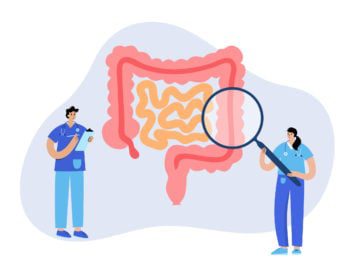
Families with dogs may also have more diverse microbiomes than those without dogs, although getting a new puppy might understandably be too extreme an intervention for some. [14]
Additionally, there are several services available now that allow you to test your microbiome. These microbiome testing services require just a small sample, can be completed at home, and can provide a wealth of information about the bacteria in the human microbiome and how to improve the gut microbiome.
We recommend the BiomeFx test from Microbiome Labs, which you can learn more about in this discussion with Microbiologist, Kiran Krishnan.
Factors That Harm the Microbiome
Now, let’s talk briefly about some things that may harm the microbiome.
- Diet. As we discussed a bit above, the microbiome and diet are strongly linked. A diverse diet rich in nutrient-dense, minimally processed foods, a variety of prebiotic sources, and fermented foods (if you can tolerate them) can help promote a vibrant, thriving population of beneficial bacteria. On the other hand, diets high in processed foods, difficult-to-digest foods (gluten, for example), and harmful additives — or diets lacking in diversity — can set the stage for SIBO or for opportunistic microbes like Candida albicans (yeast) to take hold.
- Medications. Several medications can harm the microbiome, with antibiotics at the top of the list. However, other common medications for blood pressure, diabetes, depression, and constipation can have a direct influence on your gut microbiome too. [15]
- Sedentary lifestyle. Although still poorly understood, there appears to be a relationship between the health of the microbiome and activity level. Lack of physical activity may negatively affect your gut health and microbiome. The causal link may be related to inflammation, but this is still a hotly-researched topic. [16]
- Sterile environments. Although we live in a world of hand-sanitizer, religious hand-washing, antibacterial soap, and germicidal cleaners — these compounds and the overly clean environments they help create can actually harm the beneficial microbes that live in and on your body.
- Drugs and alcohol. Researchers have found that, even in people who don’t abuse alcohol, drinking alcohol can change the composition of the gut microbiome. Likewise, the gut microbiome and its interactions with the brain are thought to play a role in opioid addiction. [17, 18]
- Poor sleep. In another relationship that may be linked to inflammation, sleep has been shown to affect microbial diversity in the gut. Researchers have noted that people who get the most sleep each night have the most diverse and healthy microbiomes, while those with poorer sleep have higher inflammatory markers and less microbial diversity. [19]
- Stress. Finally, psychological stress can have a big impact on your gut health too. You may have heard before how stress is bad for your health because of the negative effects of high levels of the hormone cortisol, but stress can affect your microbiome negatively too. One study has found that mental stress can impair your gut microbe-driven immunity, allowing opportunistic pathogens a foothold. [20]
If you’d like to learn more about sleep improvement and stress management, check out this comprehensive post, which dives into both topics and offers all our best tips, suggestions, and recommendations!
This is far from a complete list, too. With the microbiome as large and complex as it is, its health is intricately weaved with our own bodily health. However, lifestyle is the common factor in all of these issues — driving home how important it is to lead a healthy lifestyle for optimal microbiome and overall wellness.
With the microbiome as large and complex as it is, its health is intricately weaved with our own bodily health. However, lifestyle is the common factor in all of these issues — driving home how important it is to lead a healthy lifestyle for optimal microbiome and overall wellness.
Connection Between Gut Dysbiosis, SIBO, and a Healthy Microbiome
When your gut microbiome is out of balance, it’s called gut dysbiosis. Because of the many roles that the microbiome plays in your overall health, dysbiosis can cause a number of health issues — some that may not seem even remotely related to the gut. Remember, as we mentioned above, the microbiome can impact mood and brain function, metabolism, and — especially — the immune system.
A common form of dysbiosis is SIBO, or small intestine bacterial overgrowth. This is exactly what it sounds like, an overgrowth of bacteria in the small intestine. Most beneficial microbes live in the large intestine, so when there is an overgrowth in the small intestine it can cause a lot of problems.
The conventional treatment for SIBO involves antibiotics to rapidly destroy the bacterial overgrowth, but these can wipe out the healthy bacteria in your large intestine as well.
That’s why the best strategy is to adopt a microbiome-friendly diet and lifestyle to help keep your microbiome healthy, balanced, and flourishing.
If you want to learn more about SIBO specifically, we recommend this incredibly high-value professional training with Microbiologist, Kiran Krishnan. It’s the most in-depth look into the root-causes and potential solutions to SIBO we’ve seen anywhere!
Takeaway
The microbiome isn’t just a “gut health” thing — it’s a life thing. With a full 50% of the cells in and on our persons being some kind of microorganism, it’s evident that these microbial cells we host have the power to drastically affect our health for better or worse.
To learn more about optimizing your microbiome, we invite you to first download our free Gut Repair & Microbiome Optimization Guide.
For an even deeper dive, sign up for a free 48-hour trial of our Microbiome Masterclass to get a taste of this comprehensive program – which features 16 professional presentations from leading experts on topics related to optimizing your microbiome!
Gut Microbiome & Digestion Products
-
-
-
-
$119.98
ZenBiome™ Sleep is formulated to help clients deal with occasional...
Get Social
Recent Podcasts
Recent Courses
Build Your Resilient Gut
An Exclusive Course with 10 Years of Microbiome
Kiran’s Professional Training Vault
If you’ve ever wanted all of Kiran’s best
Toxicity & Detoxification Masterclass 2024
The toxicity and Detoxification Masterclass covers a wide
Brain & Nervous System Masterclass 2024
19 Leading Experts Share Cutting-Edge Science, Effective Practices,
Autoimmune Masterclass 2024
Autoimmune Masterclass brings together 17 of the world’s
Get the RHT Newsletter
Be the first to get access to special offers, new podcasts, courses, products and events from Rebel Health Tribe.
Facebook
Twitter
Pinterest
LinkedIn
Reddit
WhatsApp
Telegram
StumbleUpon
-
HistaHarmony™
$46.99If you get fatigued, flushed, or foggy after...
-
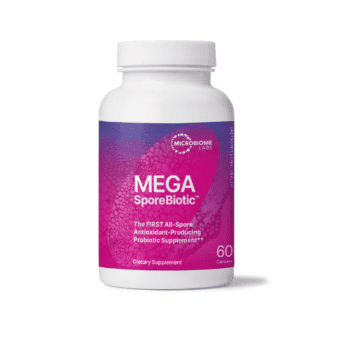
- Select options This product has multiple variants. The options may be chosen on the product page
MegaSporeBiotic
$59.99 – $176.95MegaSporeBiotic™ is a 100% spore-based, broad-spectrum probiotic shown...
-
MegaSporeBiotic For Kids Gummies
$26.10MegaSporeBiotic™ Gummies are a 100% spore-based proprietary probiotic...
-
MegaMucosa
$59.99MegaMucosa is the first complete mucosal support supplement...
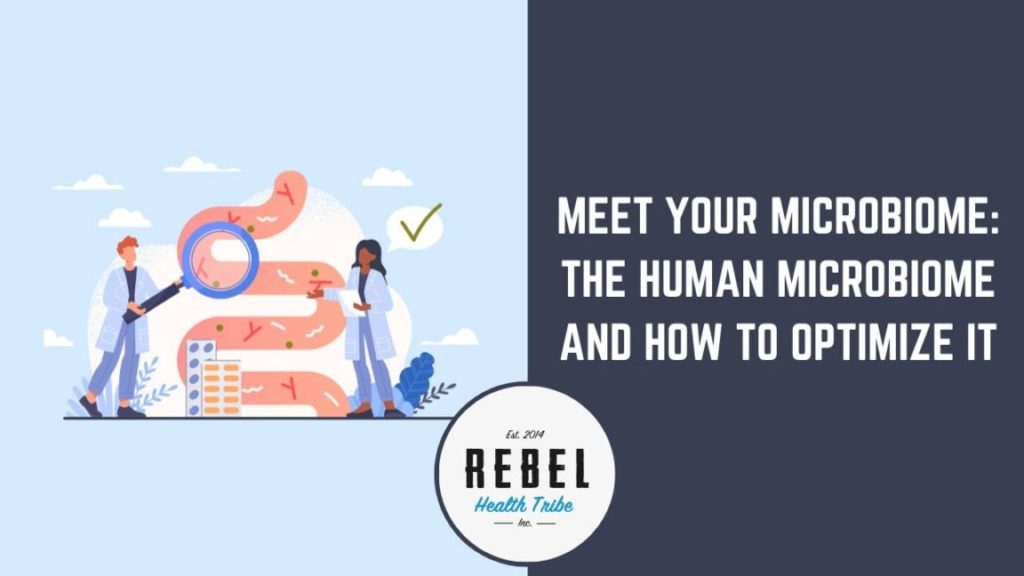
Meet Your Microbiome: The Human Microbiome and How to Optimize It
Meet Your Microbiome: The Human Microbiome and How to Optimize It On and in the average human, there reside approximately
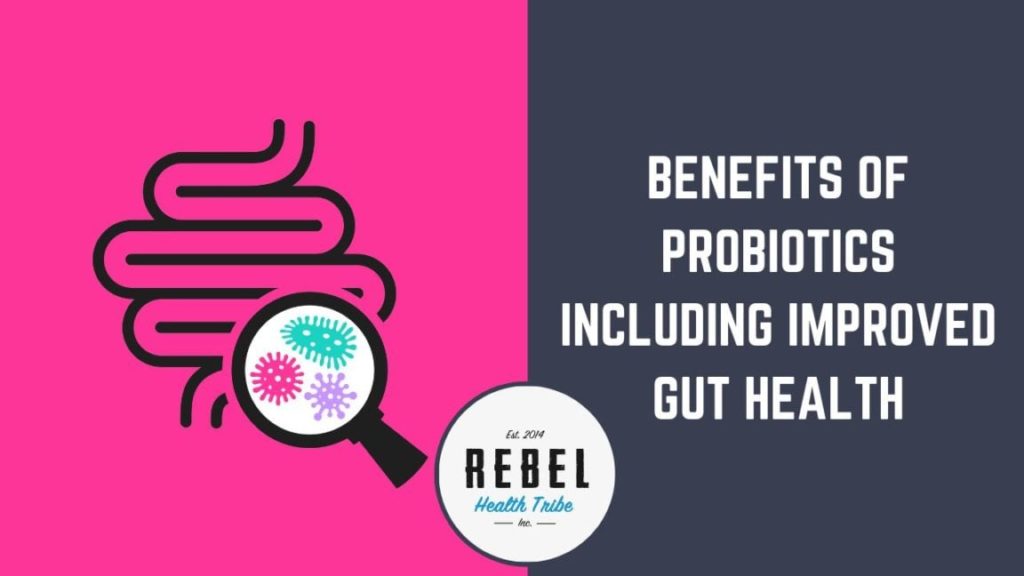
Benefits of Probiotics Including Improved Gut Health
Benefits of Probiotics Including Improved Gut Health “Probiotics” has become quite the buzzword – with countless products and supplements proudly

Gut Microbiome Health and the Gut-Immune System Connection: Part 2 Lower GI
Gut Microbiome Health and the Gut-Immune System Connection: Part 2 Lower GI The diverse community of microbes in your digestive

Gut Microbiome Health and the Gut-Immune System Connection: Part 1 Upper GI
Gut Microbiome Health and the Gut-Immune System Connection: Part 1 Upper GI The message is out: gut health is critical



